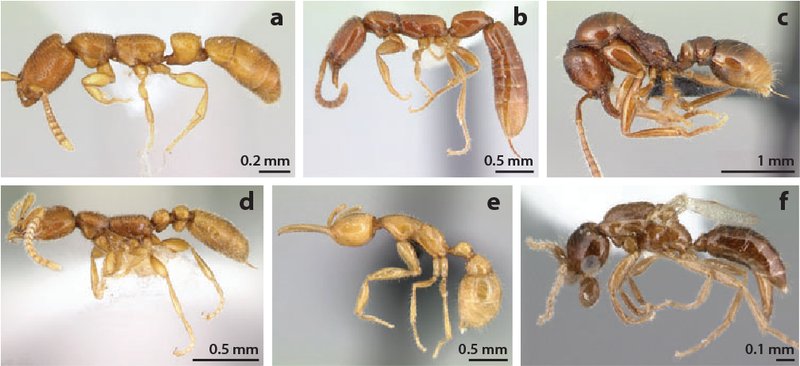
You might be wondering: why should we care about ants? Honestly, ants play a crucial role in our ecosystems. They help with soil aeration, seed dispersion, and even pest control. Plus, studying their evolution gives us insights into how life on Earth has changed over millions of years. So, grab your coffee, and let’s explore the intriguing history of these small yet mighty insects.
The Birth of Ants: A Journey Through Time
Ants are believed to have first appeared around 120 million years ago during the Cretaceous period. They’re thought to have evolved from wasp-like ancestors. Imagine a time when dinosaurs roamed the Earth and flowering plants were just starting to emerge; this is when ants began their journey. The transition from wasps to ants involved a significant shift in behavior and lifestyle.
Back then, early ants were solitary creatures, much like their wasp relatives. They lived alone and didn’t have the complex social structures we see today. As nature evolved, some ants started to develop more cooperative behaviors. Over time, these social interactions became the foundation for the ant colonies we’re familiar with today. This shift laid the groundwork for their incredible adaptability and success.
The Rise of Social Structures in Ants
One of the most fascinating aspects of ant evolution is their sophisticated social systems. As ants began living in colonies, they developed a caste system, which includes queens, workers, and drones. Each caste has its role, much like a well-oiled machine. The queen is the mother of the colony, responsible for laying eggs; workers maintain the nest, find food, and care for the young; and drones mate with the queen.
These social structures allow ants to be incredibly efficient. For instance, if you’ve ever seen a line of ants carrying food to their nest, that’s the result of teamwork. Worker ants communicate through pheromones, special chemical signals, to coordinate their activities. It’s like having a built-in GPS system, guiding them back to the nest or to food sources. This level of cooperation is one of the reasons ants are so successful in various environments.
The Diversity of Ant Species
There are over 12,000 known species of ants, each adapted to its unique environment. Some ants thrive in deserts, while others prefer tropical rainforests. You might be surprised to know that the *Formica* and *Camponotus* genera are among the most diverse. Within this sprawling family, you’ll find everything from leafcutter ants that farm fungus to army ants that exhibit nomadic behavior.
This diversity is a testament to their evolutionary journey. Ants have adapted to different climates, food sources, and living conditions over millions of years. For example, fire ants, known for their painful sting, have adapted to be aggressive, helping them survive in competitive environments. Meanwhile, carpenter ants have evolved to nest in wood, making them skilled at navigating their surroundings.
Ants and Ecosystem Engineering
Ants are often described as *ecosystem engineers*. They play a crucial role in shaping their environments. Through their nesting and foraging behaviors, ants influence soil composition and create habitats for other organisms. For instance, when ants tunnel through the ground, they aerate the soil, allowing water and nutrients to reach plant roots more effectively.
Additionally, ants contribute to seed dispersion. Some species, like the *Myrmica*, transport seeds back to their nests, where they consume the nutritious outer coating but leave the seed intact. This mutual relationship between ants and plants helps in the propagation of various plant species. It’s a beautiful example of how ants can be both active participants and caretakers in their ecosystems.
Ants in Human Culture
Ants have inspired humans for centuries, showing up in art, literature, and even folklore. In many cultures, they symbolize hard work, cooperation, and community. For example, Aesop’s fable “The Ant and the Grasshopper” teaches the value of diligence and preparation. This story reflects how humans have admired ants for their industrious nature.
Moreover, scientists have used ants as models for studying social behavior, evolution, and environmental interactions. Their complex societies offer valuable lessons about cooperation and community dynamics, often drawing parallels to human societies. This connection fosters a greater appreciation for these tiny creatures and their importance in our world.
The Future of Ants: Challenges and Conservation
While ants have thrived for millions of years, they’re not immune to challenges—especially due to climate change and habitat destruction. Altered ecosystems can disrupt their food sources and nesting sites, leading to population declines in some species. You might be surprised to learn that some ants are indicators of environmental health because they respond quickly to changes in their habitats.
Conservation efforts are underway to protect these remarkable insects. By preserving their habitats and promoting biodiversity, we can help ensure that ants continue to thrive. Supporting local ecosystems can contribute to a healthier planet for all of us. After all, ants are a testament to resilience and adaptability, qualities we should strive to mirror in our own lives.
Ants are more than just tiny insects; they’re a testament to evolution, cooperation, and resilience. From their humble beginnings millions of years ago to their intricate social structures today, ants have carved out an essential place in our ecosystems and our culture. As we continue to study and appreciate these remarkable creatures, let’s remember their invaluable role in maintaining the balance of nature.
So next time you see an ant carrying a crumb or marching in a line, take a moment to appreciate what’s behind their tiny, industrious bodies. They’re a reminder of the wonders of evolution and the interconnectedness of life on Earth. Next time you’re out, think of these little creatures as more than just a nuisance; they’re a vital part of our world and fascinating in their own right!
